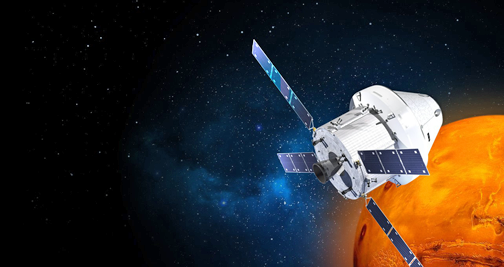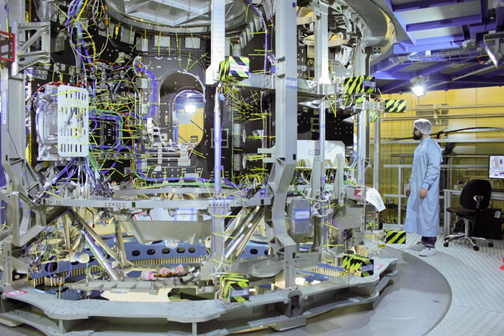
Airbus Defence and Space has garnered a new contract with the European Space Agency (ESA) for the construction of the second European service module (ESM) for NASA’s Orion spacecraft.
The contract is worth around 200 million euros. The ESM is a key element of Orion, the next-generation spacecraft that will take astronauts beyond LEO for the first time since the end of the Apollo program. The module provides propulsion, power and thermal control and will supply astronauts with water and oxygen on their missions beyond the Moon to more distant destinations such as Mars. The ESM is installed underneath the crew module. ESA selected Airbus Defence and Space as prime contractor for the development and construction of the first ESM in November 2014.

Artistic rendition of NASA's Orion 2 spacecraft.
More than 20,000 parts and components will be installed in the ESM flight model, from electrical equipment to rocket engines, solar panels, fuel tanks and life support materials, as well as hundreds of meters of cables and tubes. The integration of the first flight model has been in full flow since May 2016 and the start of the integration of the second flight model has been planned for the middle of next year.
The second test flight of the Orion spacecraft and the first flight with NASA’s Space Launch System rocket is known as Exploration Mission 1. This mission will be uncrewed and will take the spacecraft more than 64,000 kilometers beyond the Moon in order to demonstrate the performance of the spacecraft. The first crewed mission—Exploration Mission 2—will take place as early as 2021.
The design of the Orion spacecraft enables astronauts to be transported farther into space than ever before. The spacecraft transports the crew into space, enables an emergency abort and provides life support for the crew during the flight and a safe return to the Earth’s atmosphere, even at extremely high re-entry speeds from the depths of space. With planned missions beyond the Moon including to an asteroid redirected to the lunar orbit, NASA is building capabilities to send humans to Mars and ushering in a new era of space research is beginning.

The ESM is a cylinder with a height and diameter of around four meters. Like the Automated Transfer Vehicle (ATV), it has a distinctive four-wing solar array (19 meters across when unfurled) that generates enough energy to power two households. The service module’s 8.6 tons of fuel can power one main engine and 32 smaller thrusters. In total, the ESM weighs just over 13 tonnes. In addition to its function as the main propulsion system for the Orion spacecraft, the ESM will be responsible for orbital maneuvering and position control. It also provides the crew with the central elements of life support like water and oxygen, and regulates thermal control while it is docked to the crew module. Furthermore, the unpressurized service module can be used to carry additional payload.
For the development and construction of the ESM, Airbus Defence and Space can draw on the firm's extensive experience as prime contractor for ESA’s unmanned ATV, which provided the crew on board the International Space Station with regular deliveries of testing equipment, spare parts, food, air and water as well as fuel.
“With this follow-on contract, we are highly motivated to continue supporting NASA’s pioneering deep space mission. This confirms how much confidence our customers ESA and NASA, as well as our industrial partner Lockheed Martin Space Systems, have in our expertise and competence – trust that they already placed in us for the development and construction of the first European service module,” said Nicolas Chamussy, Head of Space Systems.

